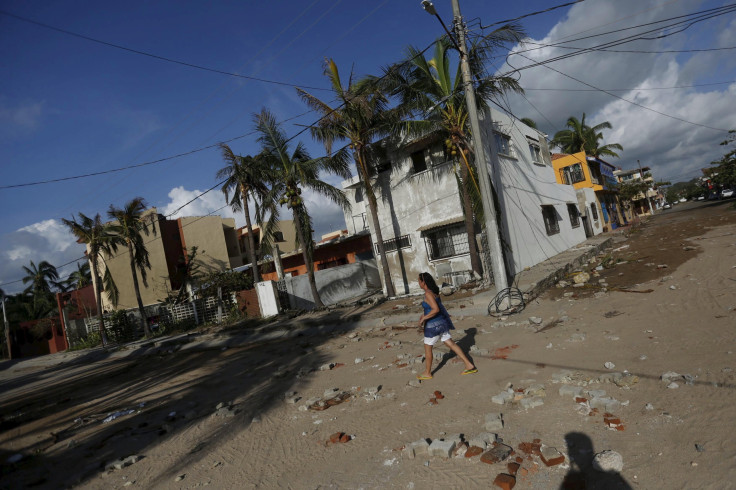Hurricane Patricia: As Mexico Recovers, Torrential Downpours In Texas, Flood Watches Along Gulf Coast

As Mexico recovers, remnants of the strongest hurricane ever recorded brought historic downpours in Texas. Storms were expected to hit Houston Sunday.
Hurricane Patricia made landfall on a remote stretch of Mexico’s Pacific Coast Friday night. The Category 5 storm -- which peaked offshore with winds of 200 mph -- ultimately inflicted less damage than many feared: The brunt of the hurricane did not reach the heavily populated cities of Manzanillo and Puerto Vallarta. And according to Mexican authorities, residents overwhelmingly heeded calls to evacuate and take shelter. There are no reports of deaths or injuries.
Touring areas hit hardest by the storm in the state of Colima, Mexican President Enrique Pena Nieto reported Patricia caused 235,000 people to lose electricity, and authorities had restored service to about one-half of them by Saturday, according to the daily newspaper La Jornada. Service was expected to fully return by Monday. Meanwhile, between 3,000 and 3,500 homes were damaged or destroyed, and 3,500 hectares of agricultural land were affected. Currently, federal highways and nearby airports are fully operational.
As the remnants of Patricia barrel northward, they’ve collided with another storm system hovering over Texas. As a result, portions of the state were hit by 20 inches of rain Saturday -- with downpours expected to continue Sunday. As much as another foot of could be coming as the storm system moves eastward, according to forecasts.
Heavy rain, flash flooding threat moves into lower Miss. Valley. Turn Around Don't Drown! https://t.co/NifPjcMp6S pic.twitter.com/gj9sGRYlTS
— NWS (@NWS) October 25, 2015A 41-year-old homeless man went missing in San Antonio, which broke its daily rainfall record Saturday. According to a local fire department representative, the man went looking for his dog near a drainage ditch and was “swept away.”
Early Saturday, a freight train derailed near Corsicana, about 50 miles south of Dallas, when a creek overflowed and washed away the tracks. Crew members escaped without injury.
Greater Houston and its more than 6 million residents were bracing for impact Sunday, with the city’s mayor warning residents to avoid wet roads after dark and look out for flash floods. This year, flash foods in the Houston area have already killed at least eight people.
Much of the Gulf Coast, from southeastern Texas to the Florida Panhandle, remains on a flood watch, according to the National Weather Service.
© Copyright IBTimes 2024. All rights reserved.












